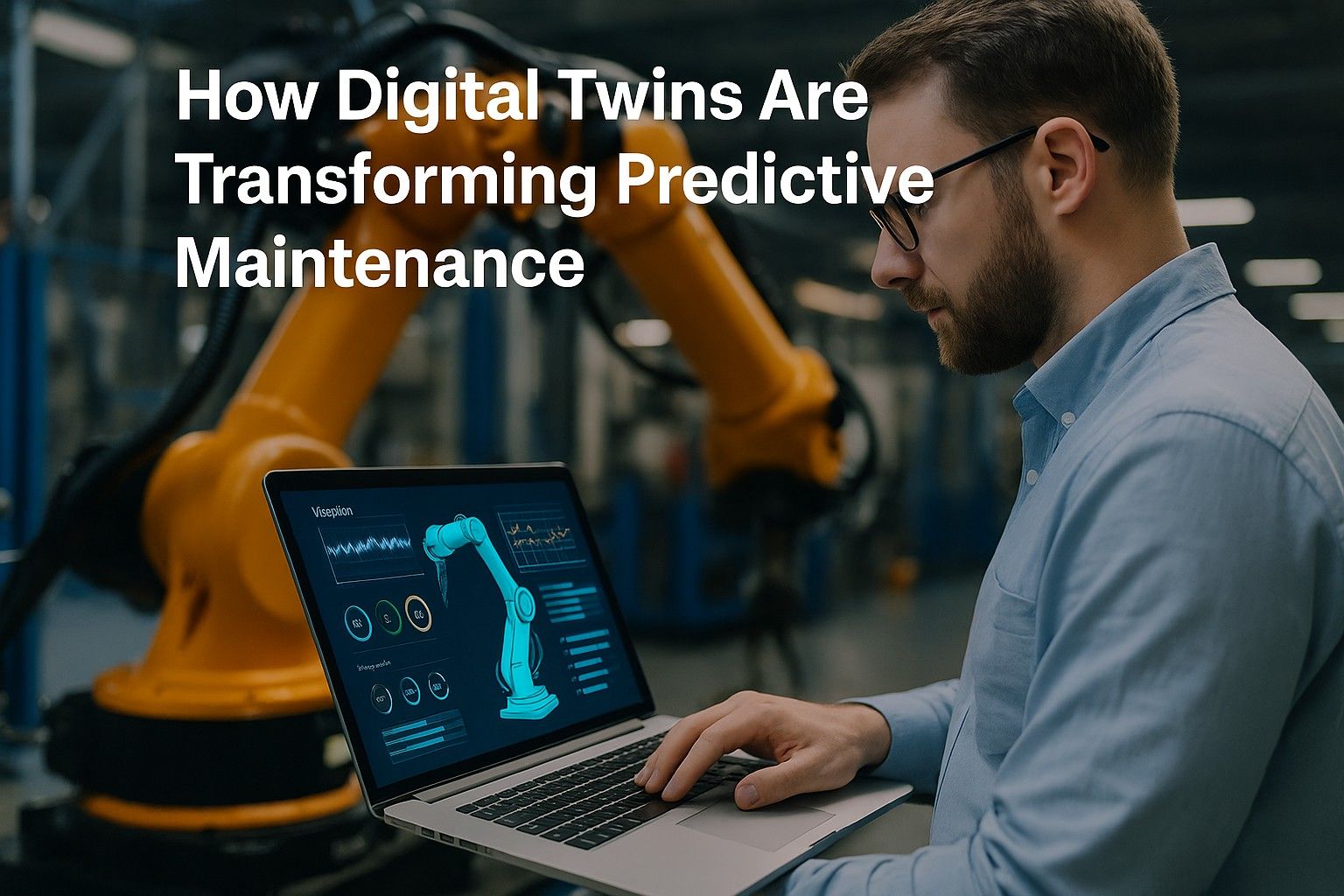Your maintenance engineer storms into Monday's production meeting with alarming news: "The primary production turbine is showing irregular vibration patterns, but our traditional monitoring can't pinpoint the exact failure mode or timeline." You scan last quarter's maintenance reports—$2.3 million lost to unexpected equipment failures—but realize your conventional monitoring systems provide only surface-level insights without predicting actual failure scenarios. Without digital twin technology and real-time virtual asset modeling, you're operating with incomplete intelligence, reacting to symptoms rather than understanding complete equipment behavior patterns.
This operational blindness affects manufacturing facilities nationwide as companies struggle with unpredictable asset failures that devastate productivity and profitability. Traditional maintenance monitoring captures only 15-25% of critical asset performance parameters, while digital twins provide comprehensive virtual representations enabling 90-95% predictive accuracy through complete system modeling.
Facilities implementing strategic digital twin predictive maintenance achieve 50-70% reductions in unplanned downtime while improving maintenance efficiency by 35-45% compared to conventional monitoring approaches. The transformation lies in leveraging virtual asset models that mirror real-time equipment behavior, enabling precise failure prediction, and optimal maintenance scheduling weeks or months in advance.
Ready to revolutionize your predictive maintenance with digital twins that create virtual mirrors of your critical assets?
Stop accepting $2.3 million annual losses from unpredictable failures when digital twin technology can model equipment behavior with 95% accuracy. Transform from reactive maintenance firefighting to intelligent predictive asset management excellence.
Understanding Digital Twins in Predictive Maintenance
Effective digital twin implementation requires understanding the sophisticated virtual modeling ecosystem that transforms real-time asset data into comprehensive predictive intelligence. These systems extend far beyond simple sensor monitoring to include physics-based modeling, machine learning algorithms, and simulation capabilities that create accurate virtual representations of physical equipment behavior under all operating conditions.
Traditional predictive maintenance relies on threshold-based monitoring that triggers alerts only when parameters exceed predetermined limits, often missing complex failure patterns. Digital twins continuously process real-time sensor data through virtual models, identifying subtle performance changes and predicting optimal maintenance timing with 90-95% accuracy, typically reducing maintenance costs by 30-40% while preventing unexpected failures.
Real-Time Asset Modeling
Virtual representations processing live sensor data to mirror actual equipment behavior. Identifies performance degradation patterns 60-90 days before traditional monitoring detects issues.
Predictive Analytics Engine
Machine learning algorithms analyzing historical and real-time data to predict failure scenarios. Achieves 90-95% accuracy for complex multi-component failure modes.
Physics-Based Simulation
Engineering models simulating equipment physics and thermodynamics. Enables "what-if" scenario testing and optimization without risking actual assets.
Integrated IoT Ecosystem
Connected sensors feeding continuous data streams into virtual models. Provides comprehensive visibility across all asset performance parameters and environmental conditions.
Digital Twin Applications by Asset Category
| Asset Category | Digital Twin Focus | Predictive Accuracy | Key Benefits |
|---|---|---|---|
| Rotating Machinery | Vibration + Thermal + Performance Modeling | 92-97% | Bearing life prediction, 90-day advance warning |
| Process Equipment | Heat Transfer + Flow + Chemical Modeling | 88-94% | Fouling detection, efficiency optimization |
| Control Systems | Logic + Performance + Network Modeling | 90-96% | Component failure prediction, system optimization |
| Power Systems | Electrical + Thermal + Load Modeling | 89-95% | Insulation degradation, power quality issues |
Digital Twin Implementation Framework
Creating effective digital twin predictive maintenance programs requires systematic development combining asset modeling, data integration, and organizational capability building. Asset prioritization assessment provides the foundation for digital twin deployment, identifying critical equipment where virtual modeling investment delivers maximum reliability and cost benefits through comprehensive predictive insights.
Digital Twin Implementation Process
Advanced Digital Twin Applications
Strategic digital twin applications extend beyond basic failure prediction to include performance optimization, lifecycle management, and integrated enterprise intelligence. The most successful facilities leverage advanced digital twin capabilities to create self-optimizing asset ecosystems that continuously improve performance while reducing maintenance intervention requirements and operational costs.
Advanced Digital Twin Applications
- Implement autonomous maintenance scheduling based on virtual model predictions and resource optimization
- Deploy edge computing for real-time digital twin processing and instant predictive insights
- Integrate digital twins with supply chain systems for predictive parts ordering and inventory optimization
- Create virtual commissioning environments for testing maintenance procedures risk-free
- Build operator training simulators using digital twin models for skill development
- Enable remote asset monitoring and expert consultation through cloud-based digital twin platforms
2025 Digital Twin Trends Transforming Manufacturing
- Generative AI enhancing digital twin modeling and predictive accuracy through advanced pattern recognition
- Quantum computing enabling complex multi-physics simulations for comprehensive asset modeling
- 5G connectivity providing ultra-low latency real-time synchronization between physical and virtual assets
- Augmented reality interfaces overlaying digital twin insights during maintenance and operations
- Blockchain technology ensuring digital twin data integrity and creating immutable maintenance records
Conclusion
Digital twins represent the most significant advancement in predictive maintenance since computerized monitoring systems, enabling facilities to create comprehensive virtual representations of physical assets rather than relying on limited sensor threshold monitoring. Organizations implementing strategic digital twin predictive maintenance achieve 50-70% reductions in unplanned downtime while improving maintenance efficiency by 35-45% through intelligent virtual modeling and precise failure prediction.
Understanding digital twin architecture reveals that successful implementations require sophisticated integration combining physics-based modeling, machine learning algorithms, and real-time data processing extending far beyond traditional monitoring installations. Digital twin predictive accuracy varies significantly by asset complexity and data quality, but modern virtual modeling consistently achieves 88-97% failure prediction accuracy for well-defined equipment types and operating conditions.
The 2025 competitive environment rewards early adopters of advanced digital twin technology while penalizing reactive maintenance approaches that ignore comprehensive asset modeling capabilities. Success requires balancing proven digital twin applications delivering immediate predictive value with emerging virtual modeling innovations positioning for future competitive advantage and operational excellence.
Ready to transform your predictive maintenance with digital twins that create virtual mirrors of your critical assets and prevent 90% of unexpected failures?
Every day without digital twin modeling is another day risking $2.3 million catastrophic failures. The technology exists now to predict these problems months in advance—implement digital twin predictive maintenance before your next costly breakdown.









